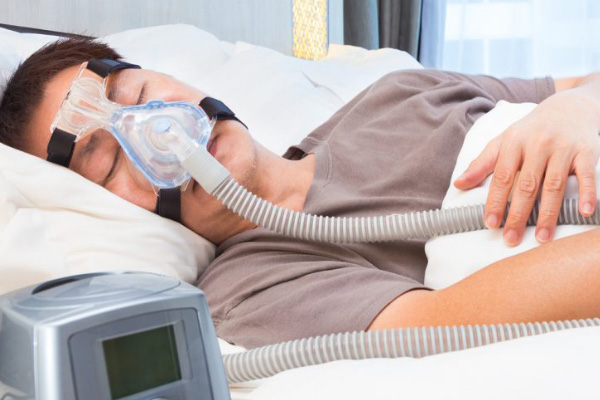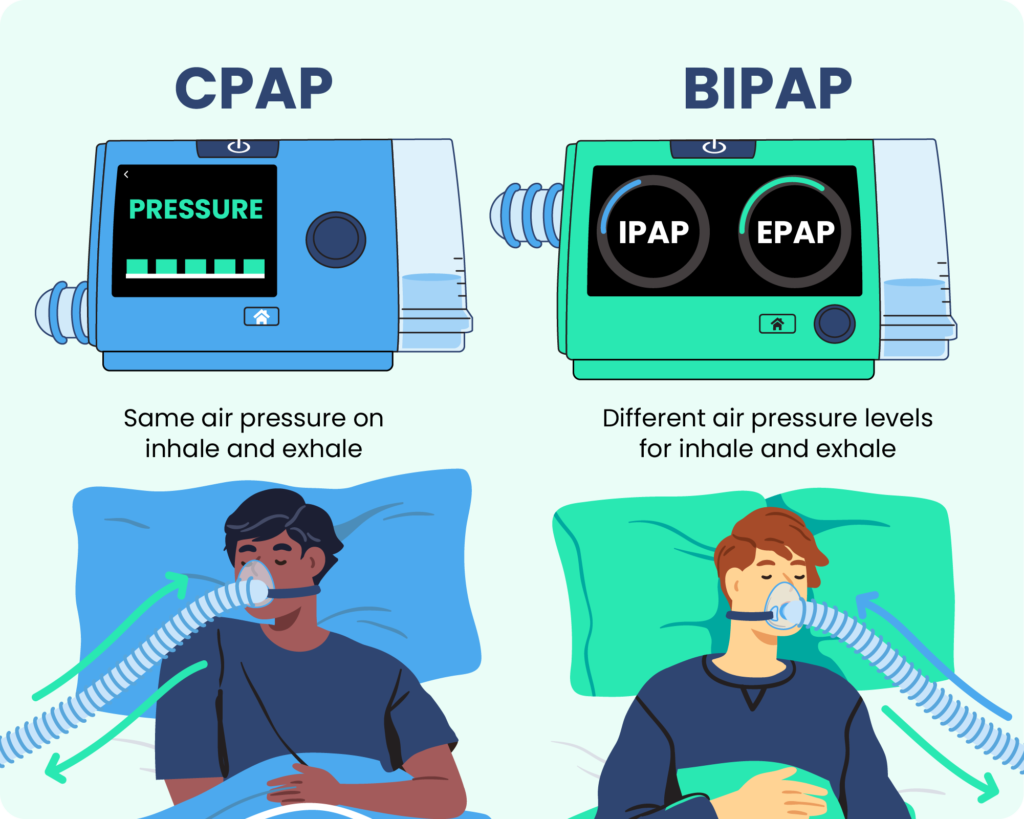Why BiPAP Rental is Perfect for Travel and Temporary Use
Why BiPAP Rental is Perfect for Travel and Temporary Use
Blog Article
Bipap vs. CPAP: Which Is the very best for Your Sleep Condition?
When navigating the complexities of rest conditions, the choice in between BiPAP and CPAP treatment is an essential consideration. While CPAP offers a consistent airflow appropriate for obstructive rest apnea, BiPAP's dual stress settings may boost comfort for those with more detailed respiratory problems.
Understanding Sleep Disorders
Sleep disorders include a variety of problems that interfere with regular sleep patterns, affecting both the high quality and duration of remainder. These disorders can show up in different kinds, consisting of insomnia, sleep apnea, narcolepsy, troubled leg syndrome, and parasomnias. Each problem provides special difficulties, commonly bring about considerable daytime fatigue, cognitive disability, and psychological disturbances.
Insomnia is identified by difficulty falling or remaining asleep, while rest apnea includes repeated interruptions in breathing throughout sleep, often bring about fragmented remainder. Narcolepsy, on the various other hand, is marked by extreme daytime sleepiness and sudden rest strikes. Restless leg syndrome creates unpleasant sensations in the legs, prompting an unmanageable impulse to move them, which can likewise hinder the ability to sleep.
The effect of sleep disorders prolongs beyond private wellness, affecting general performance, relationships, and lifestyle. Comprehending the details nature of each problem is crucial for reliable medical diagnosis and treatment. As sleep wellness becomes increasingly recognized as a crucial part of total wellness, resolving these problems is crucial for boosting both rest quality and day-to-day performance.
How CPAP Works
Continuous Favorable Air Passage Stress (CPAP) therapy is frequently utilized as a primary therapy for obstructive rest apnea (OSA) The device of CPAP entails using a machine that delivers a consistent stream of air through a mask put on throughout rest. This air movement maintains favorable stress in the respiratory tract, stopping the collapse or obstruction of the throat that can take place throughout rest.
When a client takes in, the CPAP maker supplies a constant circulation of air, making sure that the airway continues to be open - BiPAP Rental. This not just minimizes the signs of OSA, such as snoring and interrupted sleep patterns, yet also reduces the affiliated health risks, including cardio difficulties and daytime fatigue
The stress settings on a CPAP equipment can be customized to fulfill specific patient needs, commonly established via a sleep study. Overall, CPAP therapy has been shown to dramatically boost the high quality of sleep and overall health for individuals enduring from obstructive rest apnea.
Exactly How BiPAP Works
BiPAP, or Bilevel Positive Air Passage Pressure, is a specific type of non-invasive air flow that is specifically helpful for patients with conditions such as complex sleep apnea or respiratory system disorders. Unlike CPAP, which provides a continual stream of air at a solitary pressure, BiPAP offers two distinctive stress setups: a higher inspiratory pressure for breathing and a lower expiratory stress for exhalation. This dual-pressure approach permits much easier breathing, minimizing the initiative called for throughout exhalation.
The device runs with a mask fitted over additional info the nose or mouth, linked to a device that creates air pressure. When the individual inhales, the machine delivers the higher pressure to help with airflow, making certain that the airway remains open. Upon exhalation, the machine instantly minimizes the stress, making it a lot more comfortable for the individual to breathe out.

Secret Distinctions In Between BiPAP and CPAP

In contrast, BiPAP (Bilevel Favorable Respiratory tract Pressure) offers 2 various stress setups: one for inhalation and a reduced one for exhalation. This twin pressure system enables for more comfy breathing, particularly for clients that deal with exhaling against a continuous pressure. BiPAP is typically recommended for people with complicated rest apnea, persistent obstructive pulmonary disease (COPD), or those that require added assistance throughout sleep.
Additionally, the complexity of BiPAP devices generally results in a greater price and requires more cautious titration than CPAP. BiPAP Rental. check that Understanding these crucial distinctions can help in recognizing which device may be preferable for details sleep visit the website disorders, establishing the groundwork for educated therapy choices
Selecting the Right Therapy
Exactly how can one determine one of the most ideal treatment for managing sleep disorders? The choice between BiPAP and CPAP treatment largely depends upon the specific characteristics of the sleep problem, the client's overall health, and their convenience with the device. CPAP, which delivers a continual stream of air, is commonly suggested for obstructive sleep apnea (OSA) It preserves an open air passage during rest, properly preventing apneas and hypopneas.
Alternatively, BiPAP offers 2 levels of pressure: one for inhalation and a reduced one for exhalation. This twin stress system is advantageous for patients with complicated sleep apnea or those who experience problem breathing out against a continual stress. Additionally, BiPAP is commonly recommended for people with breathing conditions, such as persistent obstructive lung illness (COPD), where varying pressure settings can enhance convenience and compliance.
Ultimately, a comprehensive analysis by a sleep specialist, consisting of a sleep study, can aid figure out which therapy aligns ideal with the client's demands. Elements such as comfort, convenience of use, and details clinical conditions must also be taken into account to optimize therapy results.
Verdict
In summary, both BiPAP and CPAP serve distinctive purposes in the administration of rest disorders. CPAP is reliable for obstructive rest apnea via consistent air movement, while BiPAP supplies double pressure settings that enhance comfort for those with complex sleep apnea or respiratory system problems. The selection in between these therapies need to be directed by private needs and conditions, demanding an extensive examination by a sleep professional to ensure ideal treatment outcomes and boosted high quality of sleep.

On the whole, CPAP treatment has been revealed to significantly improve the high quality of rest and overall health and wellness for individuals enduring from obstructive sleep apnea.
BiPAP is typically suggested for people with complicated sleep apnea, chronic obstructive lung condition (COPD), or those who call for additional assistance during sleep.
CPAP is effective for obstructive rest apnea via consistent airflow, while BiPAP offers twin pressure setups that enhance comfort for those with complex sleep apnea or respiratory problems.
Report this page